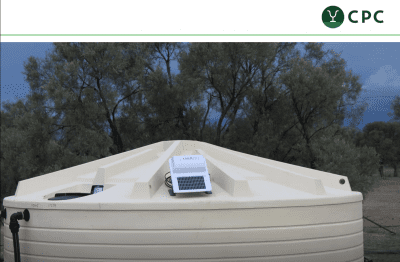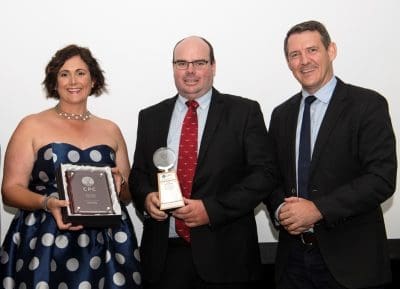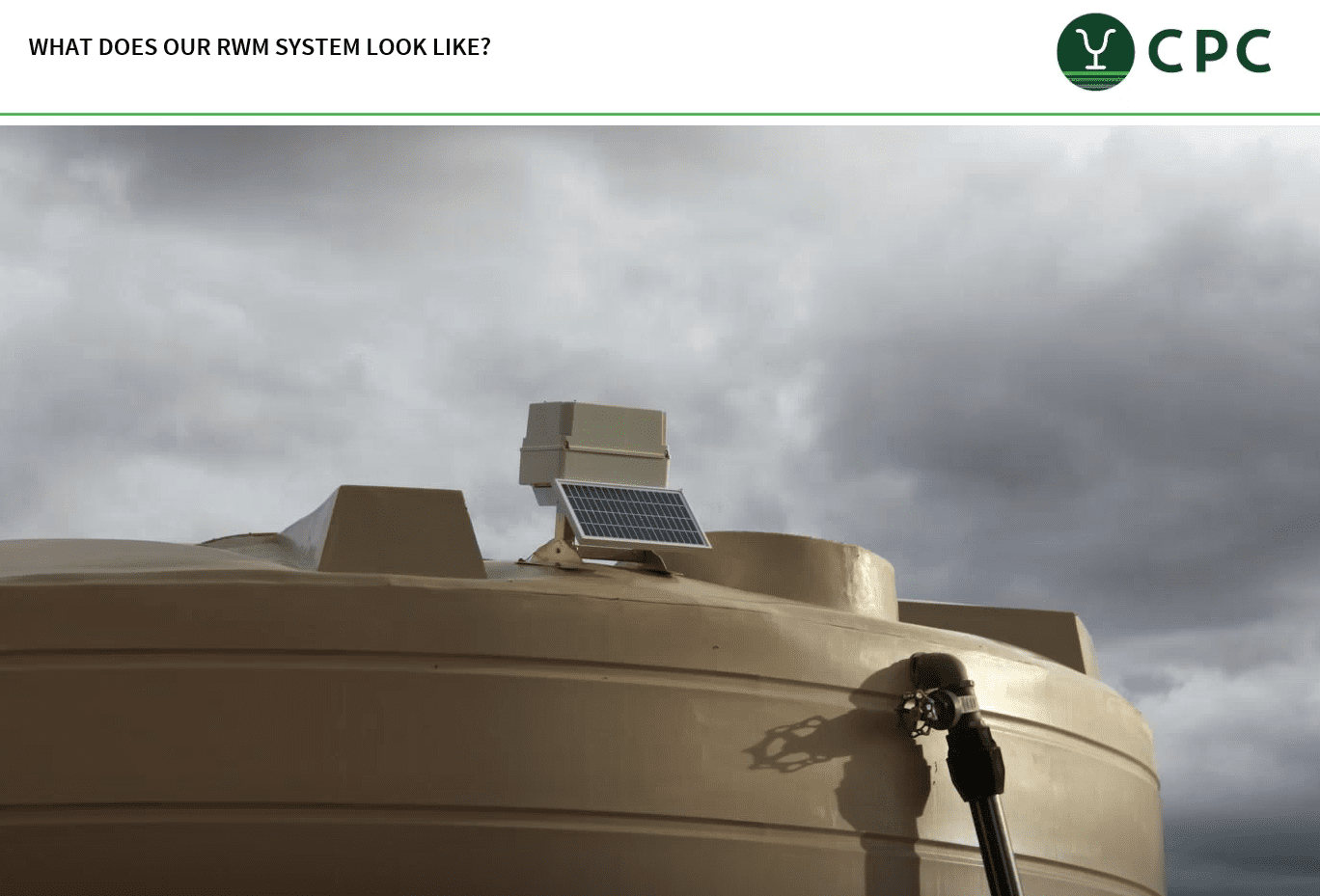THE manager of a large western Queensland cattle station has described how a significant company investment in remote water monitoring has led to a series of not only expected but also unexpected benefits for the large operation.
Anna and Andrew Cochrane manage Isis Downs Station for Consolidated Pastoral Copmany (CPC), a 237,000 hectare property situated 130km south east of Longreach which can run anywhere from 18,000 to 26,000 cattle depending on the season.
Ensuring cattle have continual access to water is paramount in the low rainfall region, where months without rain are common and summer temperatures routinely climb over 40 degrees Celcius.
One of the property’s 16 staff members is employed as a full-time bore runner who does about 1200km of internal station driving each week checking 180 stock watering points (which represents a combined total 12 bores, 80 dams, 100 tanks and 160 troughs) and cleaning troughs, fixing leaks, refueling pumps and monitoring condition of stock.
His work is supported by two aerial inspections of water points each week as well.
The cost of checking and maintaining water on Isis Downs amounts to around $120,000 annually, Anna explained on a recent webinar hosted by the NSW DPI.
That cost can increase in summer months as temperatures rise and more frequent water checks are needed, meaning more staff have to be pulled out of stock camps to help out.
In 2018 CPC began trialling a small number of remote water monitoring sensors on several stations, which has since led to a systematic program of installing sensing units on water points on a number of CPC properties including around 20 on Isis Downs.
 Research
Research
After spending a lot of time going to information events and talking to suppliers directly, Mrs Cochrane said a decision was made to go with stand-alone solar-powered FarmBot units which remotely monitor the height of water in tanks and the rate of fall using water pressure sensors. Some units also have rain gauge sensors fitted.
Each works with either satellites or Telstra’s Next G (3G) network.
On Isis Downs the system is set to provide two height alerts from each equipped tank to nominated mobile phones. One alert is sent when a tank reaches full capacity, another when a tank falls to 20 percent capacity.
“At 20 percent we find we still have time to respond to the problem,” Anna explained.
“At zero percent the recovery time is too long, especially if it takes time to find a problem in the line, or if it is in the middle of summer or we have a large mob of cattle relying on that water source.”
Data on excessive rate of fall of water in each tank is also collected, charting trends of supply and usage in a graph format, which helps to inform decision making to support what is already known about stocking rates and species at each water point, changes in weather, known weaknesses or problems in pipelines, pumping requirements etc.
“I think it is a really important point to note that these are snapshots in time and they’re real time,” Anna said.
“The tool is designed to give you more information so that you can make better decisions.”
Tips for other users
She described the technology as very simple and easy to use, but offered several tips for other users to consider before making an investment decision:
‘Research, Research, Research’ – “My hot tip for you if you are looking at going down the path of installing a remote water monitoring system, is research, research, research. Find one that marries with your water management system and your management style and gives you the information you want in a manner that you understand.”
New technology is only a good thing if it adds value to your business – “There is no point buying something if you’re not going to use it and it is not going to benefit you in the long run.”
“ There is absolutely no point delivering data that is not going to benefit your business.”
Talk directly to suppliers – “I could not encourage you more to build a relationship with your provider, ask some deeply curious questions around is the connectivity suitable for where I live, will it deliver the data I need, is it going to be fast enough for our environment, what is their approach to fixing problems.”
‘Ask deeply curious questions’
Anna said the 20 units placed on Isis Downs have been placed strategically with most fitted on bore fed tanks that fill last.

Anna and Andrew Cochrane from Isis Downs, Qld, pictured receiving a safety award in 2019 with NT chief minister Michael Gunner.
“The reason we do this is that it doesn’t tell you where the leak is, but it tells you there is a problem in that particular line.
“In terms of efficiency and productivity (that) is critically important to us because when we know there is a problem in the line the bore runner can go to that point and he can work backwards up that line to find the problem.
“Without the monitors it might be two or three days before he found that because he does his runs in order, and if we didn’t have that data being delivered to us in real time we risk stock losses, we risk water quality issues and we risk a whole lot of extra maintenance and repair work.”
Cost
The cost in their operation was about $1500 for each monitor and sensor unit, with ongoing annual subscription costs between $300 and $500 per year.
“Those amounts of money from our experience are really dependent on what type of sensor you purchase and what type of connectivity you want,” she explained.
“Those prices or charges are different depending on whether the unit uses satellite or NextG technology or connectivity.”
Lessons learned
Some of the difficulties experienced to date have included a lack of effectiveness with some of the remote sensing rain gauges.
“We have learned they have to be precisely level to provide reliable data.”
Additionally they have had a couple of instances where sensors had failed, but these had been replaced by the company “with no dramas”.
“And again that comes back to having that really great relationship with whoever the provider you are using is,” she said.
Benefits
Anna said the system has produced a number of benefits, both expected and unexpected, including.
Staff satisfaction – “Staff attraction and retention has been a real positive. It is amazing, the young people in our workforce love to be involved in new innovations that rely on technology.
“… it really gets a lot of buy in from our staff, and it has also helped us with fatigue and workplace health and safety management.”
Better data processes – “There are multiple improvements in the productivity of our bore running role. The real time identification of problems is evidence-based and that helps you direct the resources that you have to be used in the most efficient way.”
Full cost recovery within 12-18 months – “We can quantify a return on our investment within the first 12 months,” she said, which included direct savings on fuel and labour.
Anna said cost benefit analysis work is being done on increasing the number of units on the station to 50 in coming years.
There are also plans within the next 12 months to put pressure sensors using the same water monitoring technology on the station’s bores to pick problems in lines faster.
“And I think that is something we are all pretty excited about.”
To view the full NSW DPI webinar recording click here




The pressure transducers that are failing now, will continue to do so, according to my experience. Replaced many times over.
The infrared units are a better solution
Seems like a great opportunity to arrange a producer demonstration site at Isis where other producers can experience the benefits.